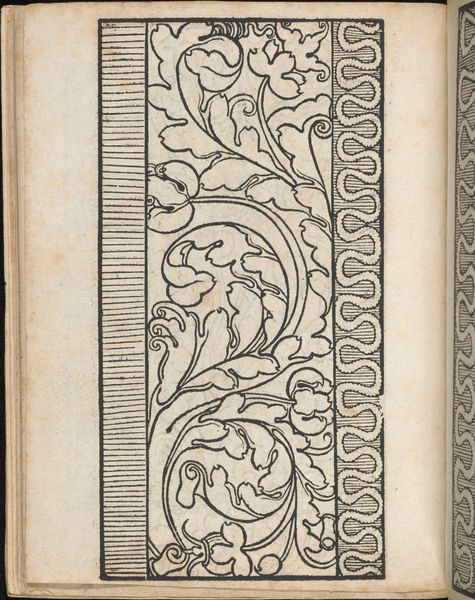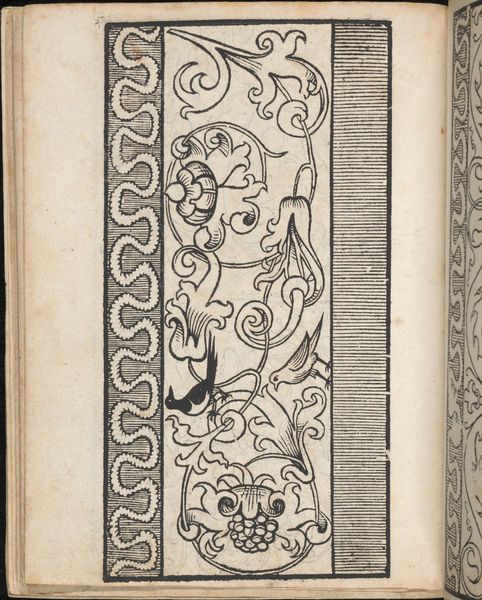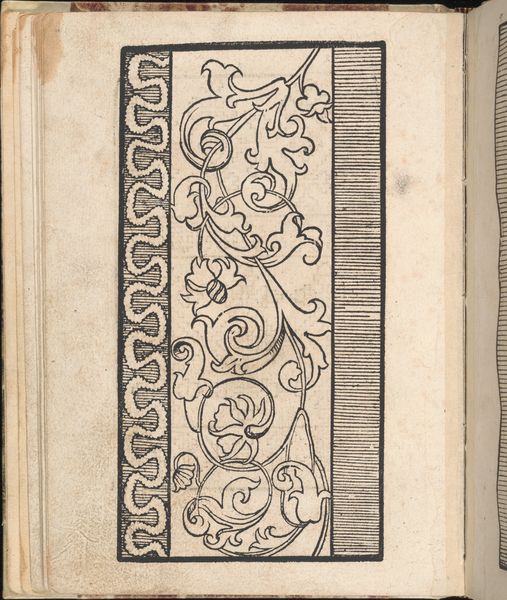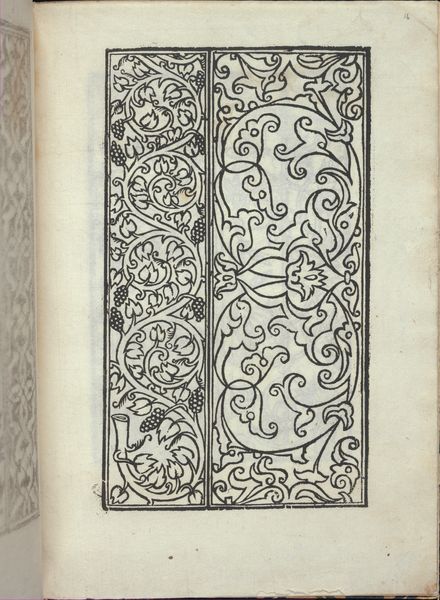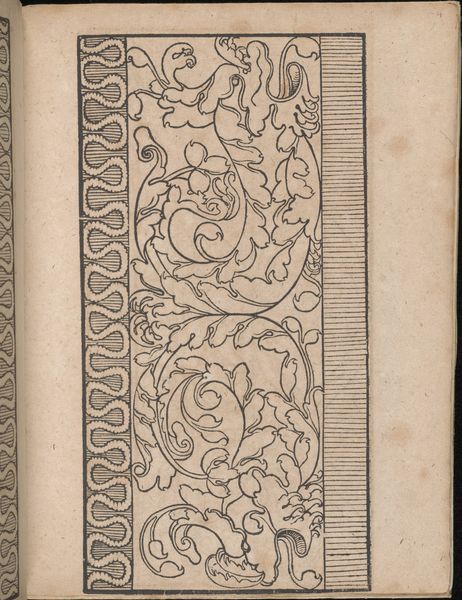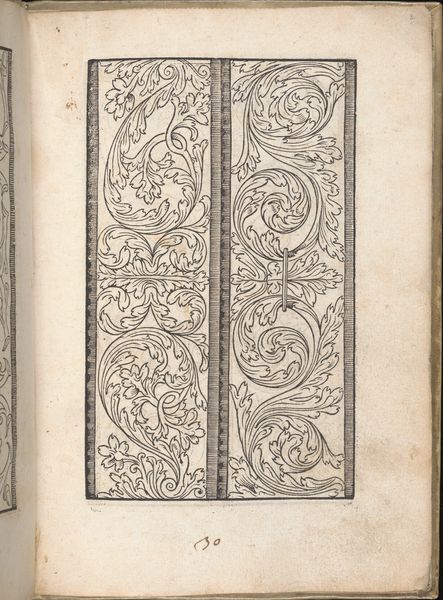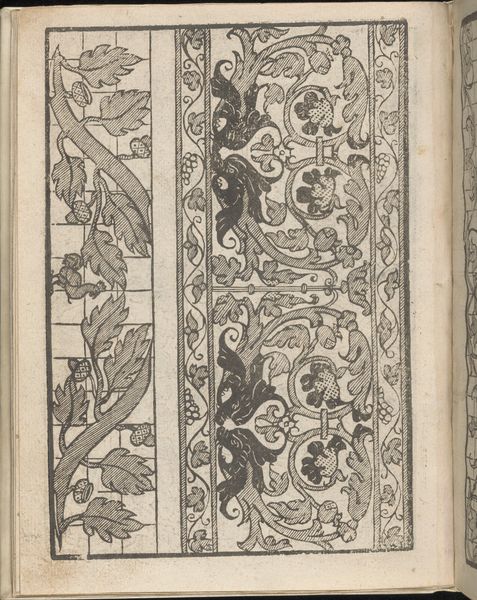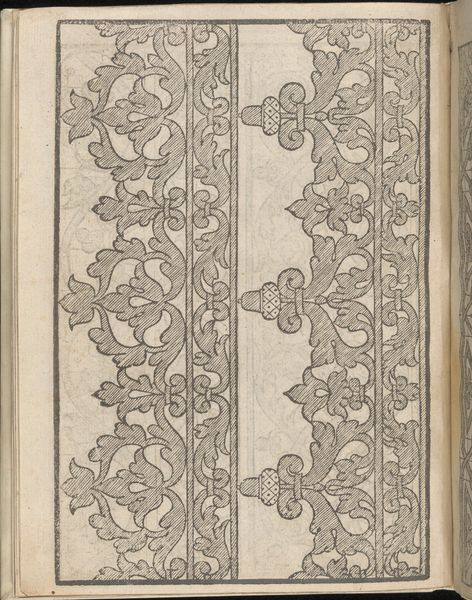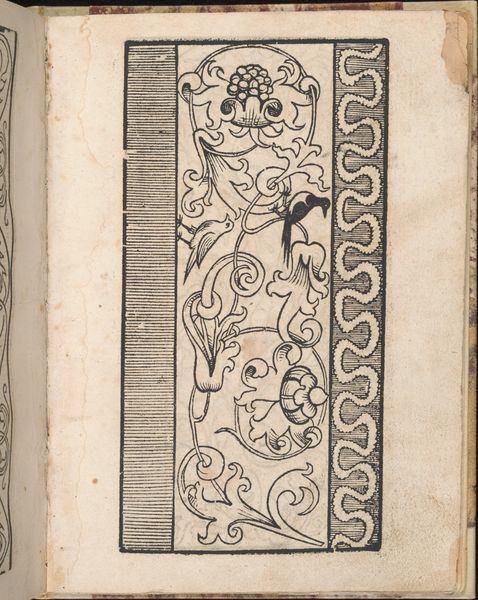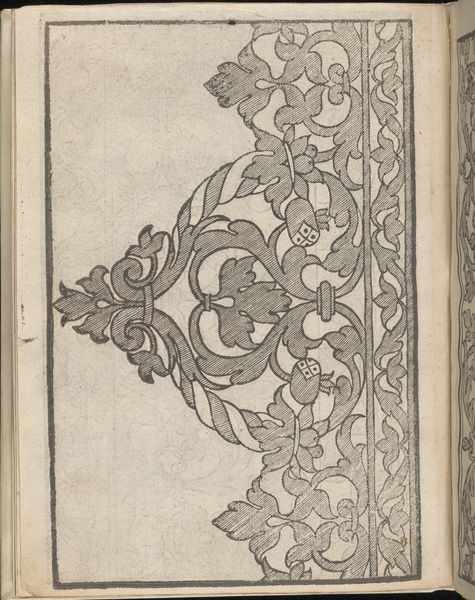
Ein new Modelbuch..., page 7 (recto) 1524
0:00
0:00
drawing, graphic-art, print, woodcut
#
drawing
#
graphic-art
# print
#
11_renaissance
#
woodcut
Dimensions: 7 5/16 x 5 3/8 in. (18.5 x 13.6 cm)
Copyright: Public Domain
Editor: Here we have a page from Johann Schönsperger the Younger’s “Ein new Modelbuch…,” created in 1524. It’s a woodcut, and the intricacy of the design is really striking! What's immediately apparent is the interplay between the densely ornamented central panel and the geometric borders; how do you read this piece? Curator: It's an exemplary piece when we consider the structural aspects. Note how the composition is strictly compartmentalized by its bordering elements on the sides and top: observe their differing treatments. This sets up an interesting visual dichotomy—the fluid, organic forms of the foliage against the rigidity of the geometric patterns. Do you notice how the patterns contribute to its visual reading? Editor: I see what you mean; one is made up of solid parallel vertical lines and the other a series of curvy loops like intertwined S shapes. The combination keeps the eye moving! The forms within the floral element appear as dynamic reflections as well, but how does it fit its function as a "model book"? Curator: That’s where a semiotic approach becomes useful. These pattern books were instructional. We can assume the intent was not for aesthetic experience but to enable an artisan's work for textiles or other art objects. Thus the interplay of texture, balance, and, above all, the possibility of repeating elements across the printing, creates this original book for functional use. Editor: That makes a lot of sense. It's like a template or guide, the way it structures elements allows for them to be modified and repeated. Now, examining the piece under the lens of artistic craft offers more meaning than I realized! Curator: Exactly. By attending to the formal structures and semiotic intention, the piece transforms from a historical curiosity into an eloquent example of visual communication in the Renaissance.
Comments
No comments
Be the first to comment and join the conversation on the ultimate creative platform.
